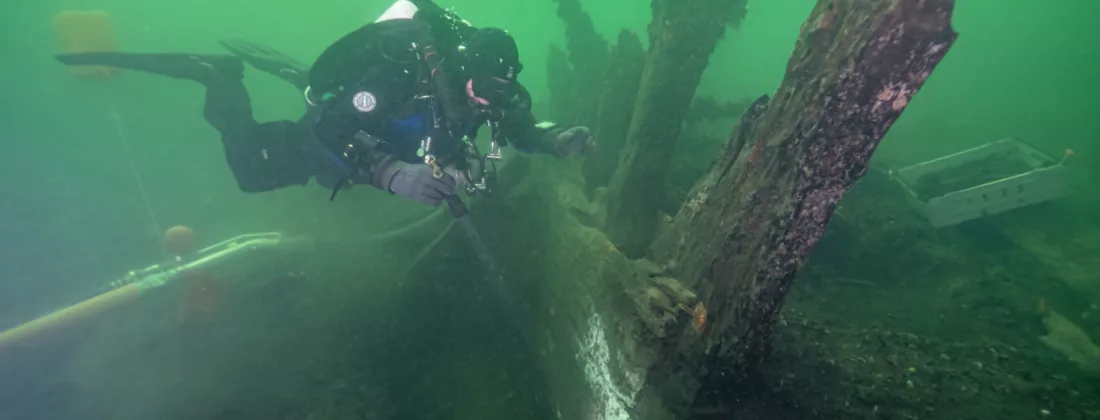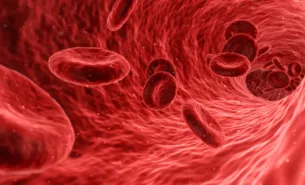When history meets present-day science fascinating things reveal themselves. In such a case, a sample of chain mail from the 15th century Danish flagship, Gribshunden, was recently analysed at MAX IV’s NanoMAX beamline. Researchers from Lund University want to know more about the structural and chemical makeup of the metal to give us a window into Sweden’s past.
“Archaeology and cultural heritage have a huge untapped potential for X-ray investigations at MAX IV,” said Jesper Wallentin, associate professor in the Department of Physics at Lund University in Sweden. “We wanted to investigate which elements are present in the chain mail ring, and this is done using scanning X-ray fluorescence. NanoMAX has a very small beam which gives a high spatial resolution, and it is well suited for this technique.”
The Gribshunden shipwreck was first discovered by divers in the 1970s off the Baltic coast of southern Sweden. Historical records describe how in 1495 King Hans of Denmark sailed to Kalmar for a meeting with the Swedish Council regarding the future of the Kalmar Union, a governing agreement which would have bound together the kingdoms of Denmark, Sweden, and Norway. A fire sunk the medieval ship en route near Ronneby, a Danish city during that time period.
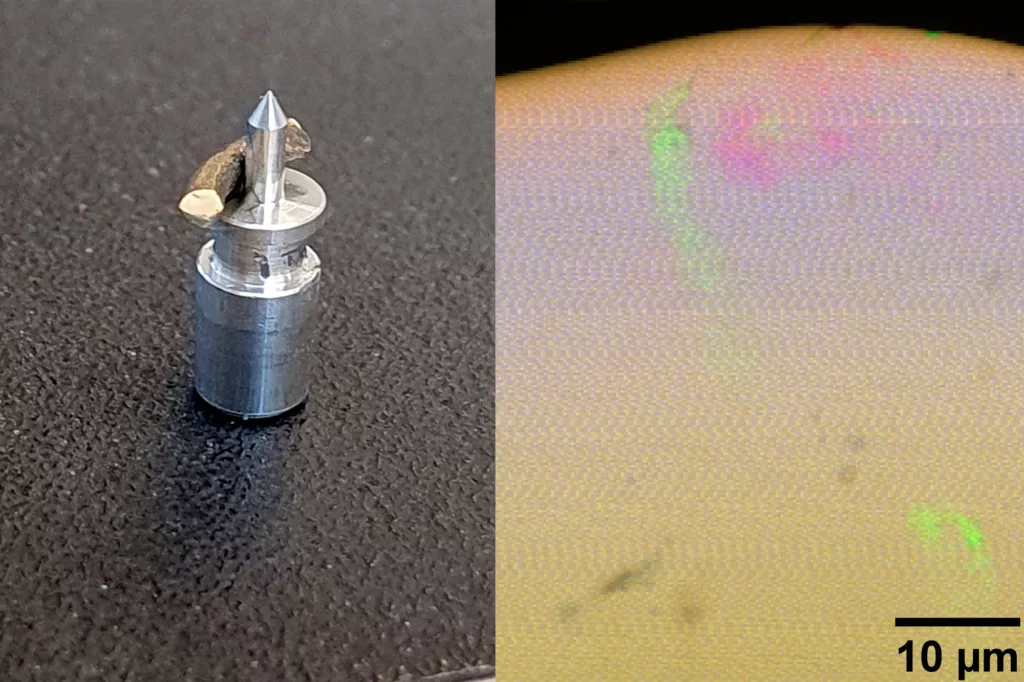
Using modern measurement techniques such as scanning electron microscopy and X-rays, researchers continue to learn about the ship’s contents. The sample investigated at MAX IV was recovered by archaeologists Staffan von Arbin and Mikael Björk during a 2019 excavation. It was prepared by Filip Lenrick at the Department of Production and Materials Engineering at Lund University.
Wallentin recently took several of his student groups to NanoMAX beamline to acquire data from the chain mail ring sample as well as learn hands-on X-ray techniques as part of their Lund University course, Modern X-ray Physics. Using X-ray fluorescence, the group measured amounts of copper and zinc in brass items, with traces of iron, lead, sulphur, arsenic, and nickel. The samples were previously analysed with other techniques including, energy dispersive X-ray spectroscopy, scanning electron microscopy (EDS-SEM), and laser ablation inductively coupled plasma mass spectrometry (LA-ICP-MS).
Secrets of medieval armour
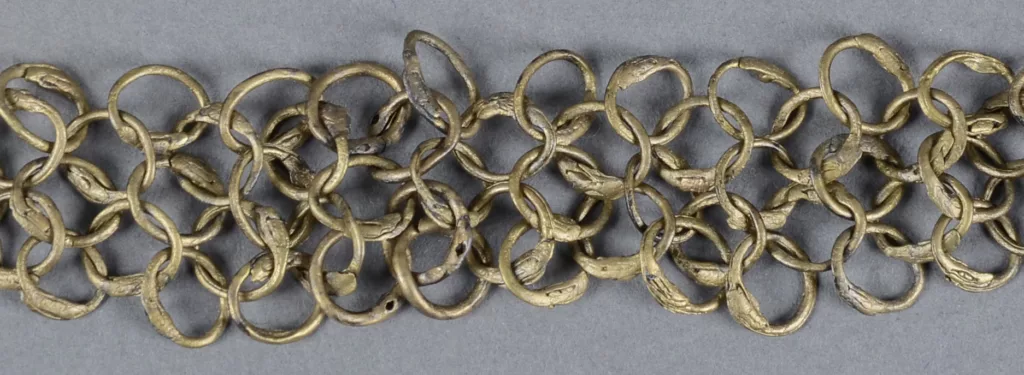
One of the most well-preserved warships of that era, the Gribshunden’s structure and organic matter onboard likely benefited from the low salinity and sheltered waters of the Ronneby archipelago. The metal of the armour, however, met a different fate.
“The marine conditions in the Baltic are terrible for preserving ferrous metals,” said Brendan Foley, marine archaeologist and scientific programme lead of the Gribshunden project at Lund University. “This is why we have only the brass decorative links of mail from these mail shirts – the iron armour links have deteriorated completely. But the conditions are excellent for preserving organic matter – for instance the exotic spices we recovered in 2021.”
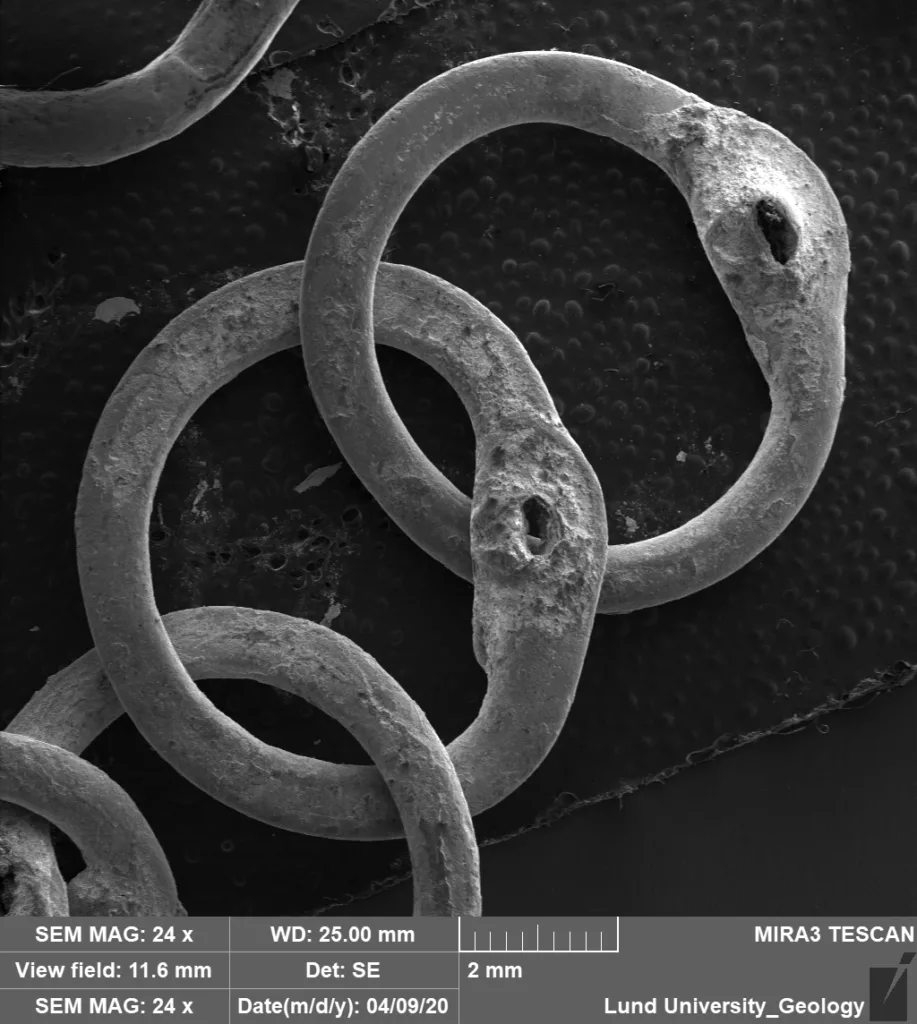
“Our research is one of the only studies ever performed on the metallurgy of medieval mail armour, and the results show a very complicated picture,” said Foley. “The alloys in the various rings’ wires in the armour are different from one another, and it’s the same with all of the mail armour links recovered from Gribshunden. The maker’s mark alloy composition is unique, too. It’s far more complex than I imagined.”
The Gribshunden armour was perhaps 80 years old when the ship sank, and it is the only medieval mail armour in the world that can be identified to the person who made it, the place it was made, and both date of manufacture and date of archaeological deposition, explained Foley.
To learn more about the fascinating findings of the ship Gribshunden (Vulture dog), ongoing research can be found below.
Related links:
Casks from Gribshunden (1495) – Dendrochronology of Late Medieval Shipboard Victual Containers
